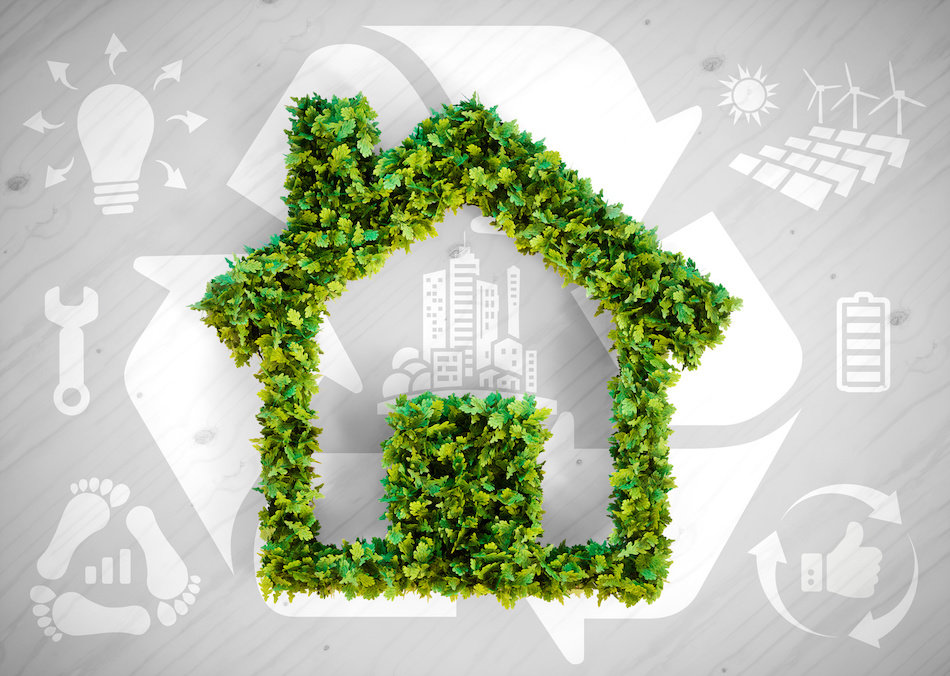5 Green Technologies Pivotal to Sustainable Building
Posted by Justin Havre on Tuesday, September 17th, 2019 at 3:13pm.
 Sustainable building has come a long way in a short time, which has made it difficult for the average construction company to keep pace with the new developments. Even as 3D printers spit out entire homes on test sites in mere hours and windows are developed with the help of Wi-Fi, most homes are still using a fairly traditional model of completion. Luckily, many countries are heavily invested in the green movement, and their efforts are starting to pay off. What is sustainable design and what is green technology? See how the newest green technologies break down and how they all add up to fewer emissions and cleaner air.
Sustainable building has come a long way in a short time, which has made it difficult for the average construction company to keep pace with the new developments. Even as 3D printers spit out entire homes on test sites in mere hours and windows are developed with the help of Wi-Fi, most homes are still using a fairly traditional model of completion. Luckily, many countries are heavily invested in the green movement, and their efforts are starting to pay off. What is sustainable design and what is green technology? See how the newest green technologies break down and how they all add up to fewer emissions and cleaner air.
Geo Exchange
When a new building in Ontario was constructed under the Zero Carbon standard, one of its main features was its geo-exchange (or geothermal) heating system. Adaptable to residential and commercial buildings alike, this technology makes it possible to draw energy from the Earth's core to keep the building at the perfect temperature throughout the year.
Considering the Earth's crust maintains a stable temperature of 15º C no matter what month it is, the pump and compression system can distribute energy to employees without having to use gas or oil. This process still requires electricity to run, which reinforces that many are targeting the elimination of carbon and not necessarily the elimination of energy just yet. Still, the process can significantly cut down on both the environmental impact of the building as well as up to 70% of heating bills, much like other energy-efficient upgrades.
Many people question the effectiveness of a heat pump in areas with cold winters. This is where a ground-source heat pump can really shift old expectations. Air-source heat pumps have to rely on a very small amount of warm air in winter to move into the home. By comparison, a ground-source heat pump can take advantage of the natural warmth sitting just a few feet below the surface. By running liquid through pipes located underground on the property, the system gathers heat that it can then circulate through the home. In summer, the direction is simply reversed.
Local Production
Canada, as well as many other countries, has placed a heavy emphasis on local products so they can spent less money and energy spent on transport. So instead of importing bamboo from Asia, it's possible to grow certain species in the country. If rammed earth is being used for compressed bricks, then it will naturally come from Canadian soil and resources. Neither of these are necessarily green technologies, but local production methods can be combined with new technologies to make them more adaptable to modern needs. For example, compressed earth has a history of degrading due to moisture, but new water run-off systems can be used to ensure compressed earth can hold its stability regardless of the long-term forecast.
Concrete is one of the least sustainable materials, but many people do not understand why. After all, the major components of concrete include sand, gravel, water, and many other naturally-occurring materials. One of the largest factors affecting cement and concrete's sustainability is transport. It is an immensely heavy material that requires a vast amount of energy to move hundreds or thousands of miles. Efforts to keep concrete production and manufacturing close to home could dramatically reduce the carbon footprint of any structure.
Rainwater Harvesting Systems
Rainwater is not only an excellent example of sustainable resources, it's also preferred by rural households compared to river or dam water. Urban households can use rainwater harvesting to collect run-off from their roofs and reduce their need for the main water supply. In addition to the obvious benefits of garden and lawn irrigation, it's possible for homeowners to use rainwater for all of their water needs, which can cut down water bills by 100%. Homes can be retrofitted for rainwater harvesting with new green technology, but some may be built with certain materials (e.g., asbestos sheets, etc.) that make them unsuitable for collecting drinking water. New homes should be able to implement the technology to provide homeowners with additional options to eliminate waste.
Changes to rainwater harvesting technology can increase the number of ways that builders and homeowners could set up a residential system. Traditionally, people install a number of rain barrels on the downspouts from their roof, to collect the water as it falls off. Without a viable means to filter out the water and maintain it, however, people are obligated to use the water within a short amount of time. Current technology makes it simpler to harvest rainwater through:
- rooftop collection
- downspouts
- solid-surface driveways
An underground harvesting and filtration system may need to be installed in advance of other features on the property.
Recycled Products
The technology for recycling has really turned a corner so that more can be done with less, comments the zero-waste and green-thinking and lifestyle EscapeWaste.com blog. New processes can turn old tires into rubber flooring and old bottles into bricks. There's even a way to mix animal blood and sand to get a brick that is surprisingly durable. What's so amazing about these new techniques is that it's technology that can be labeled as old as time.
Each new development gives builders more options to create buildings that don't necessarily need complex gadgets and machinery to function. More and more companies are trying to manufacture their products in order to fit these new objectives. For example, Heineken redesigned their bottles so they can be vertically stacked, which meant altering the length of the neck and introducing recessed sides to the bottle.
The revolution of additive manufacturing (i.e. 3D printing) in construction is driving all sorts of innovations in efficient production. The use of 3D printing allows companies to decrease their waste down to almost nothing, depending on the material and the process. This technology uses a powdered substance and a resin to create a component that often as strong and durable as one made by more traditional methods. This pressure to minimize waste leads companies to look for other viable means of recycling, where 3D printing is not practical. Converting old cement, brick, and wood into new materials for building keeps waste out of the landfill.
Sustainable Insulation Options
In addition to new standards and greener technologies for home heating and cooling, green insulation is a way to reduce the carbon footprint, build healthier homes, and phase out reliance on synthetic materials. New-old choices include:
Cellulose: Typically small particles of recycled newspapers and newsprint treated to be fire-resistant, cellulose is cost-effective and more efficient than fiberglass. It can be blown into wall cavities or applied as batts on attic floors and between roof joists.
Old Jeans: Worn denim is stripped to its original cotton fibers and reformed into insulation. Donate old denim to blue jeansgogreen.org to keep them out of landfills and put them to good new use as an eco-friendly insulating material.
Sheep's Wool: Traditional, natural, renewable, sustainable and sensible, wool insulation is sometimes termed an "elegant" solution. It is slightly more expensive than other options, but wool insulation also has acoustic advantages, and it helps control interior humidity and maintain air quality.
Aerogel: Insulation that has air as its core ingredient represents space-age technology at its best, even though the process was invented almost a century ago. The silica-based product has a sponge-like structure, and tops the list of eco-friendly insulating options.
Soy and Cashew Shells: Manufactured from the liquids of soy and cashew nut shells, this foam insulation, used primarily as a sealant around wall and roof penetrations for plumbing or electrical wiring, it is a green alternative to petroleum-based products.
Low-Zero VOC
A volatile organic compound (VOC) is toxic to the air in a home, so builders are attempting to clean up their use of these materials when building. The most common VOC is the emissions from drying paint, but it can also be found in wallpaper, stoves, and certain types of glue. Not only are they bad for the environment, they're also terrible for a person's health and are often correlated with asthma or allergies. Builders are now using products with fewer or no toxins so everyone stays healthy (both while the building stands and when it's demolished.) Thankfully, there has been a lot of competition in the green industry, which has driven up the quality of low-zero VOCs and the costs down.
Certain chemical compounds, called volatile organic compounds (VOCs) have a low boiling point. This means that they can release vapours right after they are applied, but sometimes for months or years afterward. Short-term exposure to VOCs can cause:
- dizziness
- irritation of the skin or eyes
- headache
- congestion
- allergies
People who spend a lot of time inside buildings full of VOCs may suffer long-term breathing concerns and other health problems. Although ventilation is designed to improve indoor air quality, it cannot eliminate the vapours completely.
Canada will continue to experiment with different sustainable building strategies to cut down on waste for the benefits of its residents. While still in its infancy in many ways, Chestermere home construction companies may also start to routinely introduce several types of sustainable energy to supplement one another. For example, using geothermal exchanges to reinforce solar heating during a particularly cloudy winter or using insulated concrete to build residential homes or commercial buildings that can save energy while helping the environment. Whatever the future holds, it certainly looks greener for the whole country.
